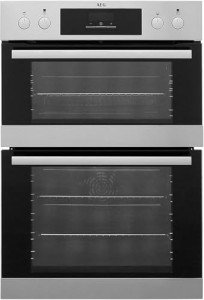Understanding Built-in Ovens and Hobs: The Perfect Kitchen Combination
As modern-day cooking areas develop, built-in appliances are becoming significantly popular for both functionality and aesthetics. Amongst these appliances, built-in ovens and hobs stand out as vital parts for any cooking lover or home cook. Built in oven and gas hob packages b&q out the advantages, functions, and factors to consider surrounding built-in ovens and hobs. It also resolves typical questions, providing a comprehensive guide to these kitchen essentials.
What are Built-in Ovens and Hobs?
Built-in ovens are integrated into kitchen cabinetry, creating a sleek, smooth look. They are available in various types, including traditional, convection, and steam ovens, each accommodating different cooking methods. Hobs, on the other hand, are the cooking surface areas that integrate with the kitchen counter top. They can be gas, electric, or induction, allowing cooks to pick based upon their cooking style and energy preference.
Benefits of Built-in Ovens and Hobs
- Space-Saving: Built-in designs optimize kitchen area by getting rid of the need for freestanding units, developing an open and airy environment.
- Aesthetic Appeal: Their streamlined style adds to a contemporary, streamlined appearance in the kitchen.
- Improved Functionality: Built-in ovens frequently feature advanced cooking technology, providing a range of features like self-cleaning and clever controls.
- Customization: Manufacturers use a range of surfaces and styles, allowing house owners to customize their appliances to match their kitchen decoration.
Types of Built-in Ovens
1. Conventional Ovens
Conventional ovens utilize radiant heat from the bottom and can be ideal for baking.
2. Convection Ovens
Stove have a fan that flows hot air, ensuring even cooking. They lower cooking time and are best for roasting meats or vegetables.
3. Steam Ovens
Steam ovens utilize wet heat to cook food, maintaining nutrients and tastes. They are ending up being significantly popular amongst health-conscious cooks.
4. Microwave Ovens
These ovens provide quick heating and cooking and serve different functions, from reheating leftovers to baking.
Types of Hobs
1. Gas Hobs
Gas hobs use gas or propane for cooking. They supply instant heat control, making them a favorite amongst expert chefs.
2. Electric Hobs
Electric hobs have strong or ceramic surface areas that warm up through electric coils. They are easy to tidy but may take longer to heat than gas designs.
3. Induction Hobs
Induction hobs utilize electro-magnetic energy to straight heat up pots and pans, using quick heating and energy efficiency. They cool off quickly and offer a safer cooking experience.
Aspects to Consider When Choosing Built-in Ovens and Hobs
When picking built-in ovens and hobs, numerous factors need to be considered:
1. Space Limitations
Measure the readily available area in your kitchen to guarantee that the appliances will fit seamlessly into the cabinetry.
2. Cooking Style
Consider your cooking routines. If you regularly bake, a stove may be perfect. On the other hand, induction hobs are fantastic for security and performance.
3. Budget plan
Pricing varies substantially based upon functions and brands. Setting a budget helps narrow down the alternatives.
4. Energy Source
Figure out whether you desire gas or electric appliances. This choice can affect cooking efficiency and energy expenses.
5. Looks
Choose finishes and styles that match your kitchen's style. Stainless steel is a popular choice for a modern appeal.
Comparison of Built-in Ovens and Hobs
| Feature | Built-in Oven | Built-in Hob |
|---|---|---|
| Type | Convection, steam, and so on. | Gas, electric, induction |
| Cooking Versatility | High | Moderate to high |
| Cleaning Ease | Varies by model | Normally simple to tidy |
| Setup Style | Integrated in cabinetry | Flush with counter top |
| Energy Efficiency | Differs by model | Induction generally most effective |
Frequently Asked Questions About Built-in Ovens and Hobs
1. Are built-in ovens more expensive than freestanding models?
Yes, built-in ovens usually feature a higher price due to their style and installation requirements. Nevertheless, they frequently offer more advanced functions.
2. Can I replace my existing freestanding oven with a built-in model?
Yes, it's possible to replace a freestanding oven with a built-in design, but you might require to make changes to your cabinetry and kitchen layout.
3. What upkeep do built-in ovens and hobs need?
Regular cleaning is essential. Lots of built-in ovens come with self-cleaning functions. It's likewise crucial to keep the hobs without spills and grease.
4. Are induction hobs safe for households?
Induction hobs are considered more secure than gas or electric options due to the fact that they only warm the pots and pans, decreasing the threat of burns or accidents.
5. How can I optimize the effectiveness of my built-in oven and hob?
To make the most of performance, constantly pre-heat the oven when required, use the appropriate size pots or pans on the hob, and think about utilizing the residual heat from your hob after cooking.
Built-in ovens and hobs provide many advantages, making them popular options for contemporary cooking areas. Their space-saving styles, advanced functions, and aesthetic appeal add to their high demand. By considering elements like area, cooking design, and budget plan, house owners can select the perfect mix of appliances that best fit their cooking needs. Whether through gas, electric, or induction hobs, and a range of oven types, the right built-in kitchen appliances can improve the cooking experience while raising the total visual of the kitchen.

